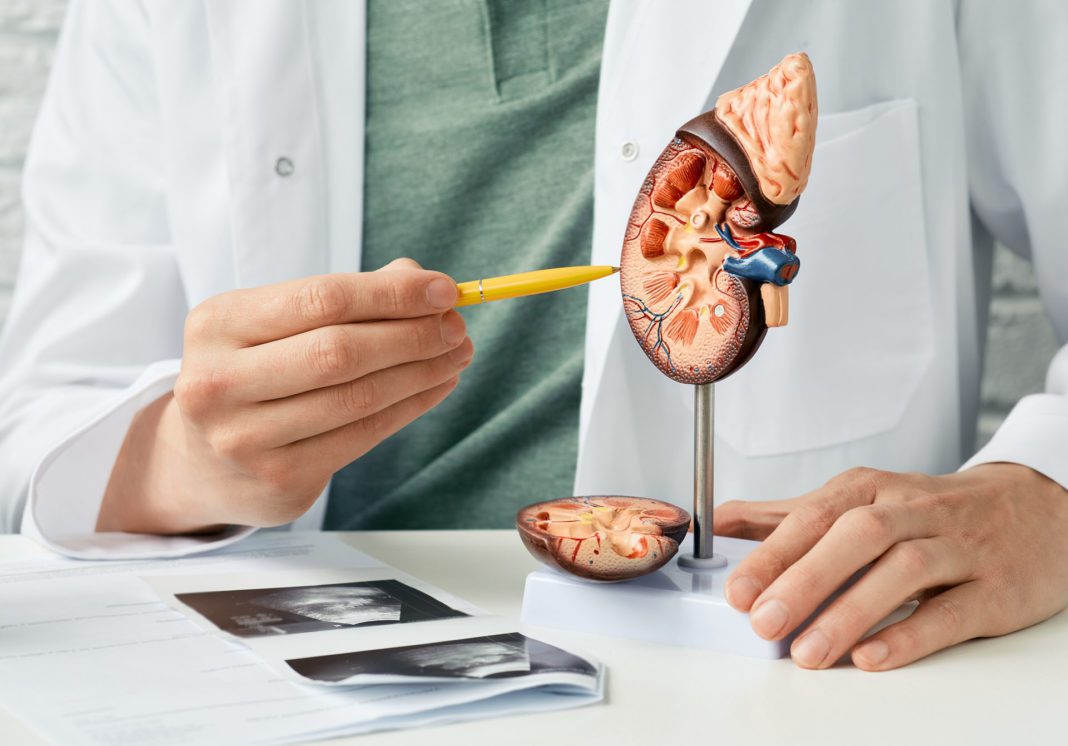It’s estimated that more than one in seven U.S. adults – approximately 37 million people – suffer from chronic kidney disease (CKD), according to the Centers for Disease Control and Prevention.
The most common cause of chronic kidney disease is diabetes mellitus, both type I and type II, followed by hypertension, says Jose El-Amm, MD, medical director of the INTEGRIS Nazih Zuhdi Transplant Institute’s kidney transplant division in Oklahoma City. Other causes include glomerulonephritis, interstitial nephritis, polycystic kidney disease – among other inherited diseases – and prolonged obstruction of the urinary tract and reflux.
While many chronic kidney diseases are incurable, El-Amm shares that as a kidney specialist, his goal for his patients is to stop or slow down the deterioration in kidney function.
“If we are able to achieve that, the kidneys could last the patient all of their life without ever ending up on dialysis or requiring transplantation,” he says.
Ben Cowley, MD, chief of nephrology at the University of Oklahoma Health Sciences Center and medical director of OU Health’s kidney transplant program in Oklahoma City, says diabetes and high blood pressure are the two leading causes of end stage renal disease, a kidney impairment severe enough to require dialysis or a kidney transplant.
“What I typically tell people who have chronic kidney disease is that we’re going to have three goals,” says Cowley. “First, we’re going to try and make their kidneys last as long as we can. Second, we’re going to try and monitor for and treat side effects of chronic kidney disease. And the third goal is to plan ahead.”
He says if it’s clear that kidney function is going to deteriorate progressively, then patients can prepare for various treatments, be it dialysis or transplantation, well before end stage kidney disease occurs.
Unfortunately, individuals with CKD may not have any symptoms until the latter stages of the disease.
“Many times the symptoms do not appear until 80% of the kidney function has been destroyed,” says El-Amm. “Early on in the disease process, the only way of diagnosing kidney diseases is by routine blood monitoring. When the disease is advanced, it can manifest with nausea and vomiting along with loss of appetite. Fatigue, decrease in mental sharpness and sleep problems also appear insidiously.”
Additional symptoms can include changes in urination, swelling of the hands, feet and ankles, dry and itchy skin, shortness of breath and chest pain.
However, El-Amm says that while “chronic kidney disease is an epidemic in our country… blood pressure control, diabetes control and weight control are crucial in preventing CKD. A routine check with your primary care physician will help pick up CKD early on,” he says.
Organ Donation
Cowley says organ donorship is no small decision, but it is a decision that will save lives.
In comparison to individuals on dialysis, patients who receive a kidney transplant typically feel better, lead more active lifestyles and live longer.
Cowley says most kidney transplants in the United States involve a deceased donor. These organ donors “can potentially donate a heart, two lungs, the liver or pancreas, and two kidneys, as well as tissue.
“Unfortunately, there are more potential recipients waiting for kidney transplants than there are deceased donors available. So people wait years before they actually get a deceased donor kidney. During that period of time, they’ll typically be on dialysis.”
The alternative, which Cowley says has significant advantages, is to have a living donor transplant.
“I consider living kidney donors to be sort of unsung heroes in this world,” says Cowley. “They do something that is of no benefit to them. It’s an incredible gift of the recipient. And if someone gets a living donor kidney, that means there’s a deceased donor kidney that can go to somebody else.”
If you’re interested in becoming an organ, eye and/or tissue donor, visit lifeshareoklahoma.org for more information.

























